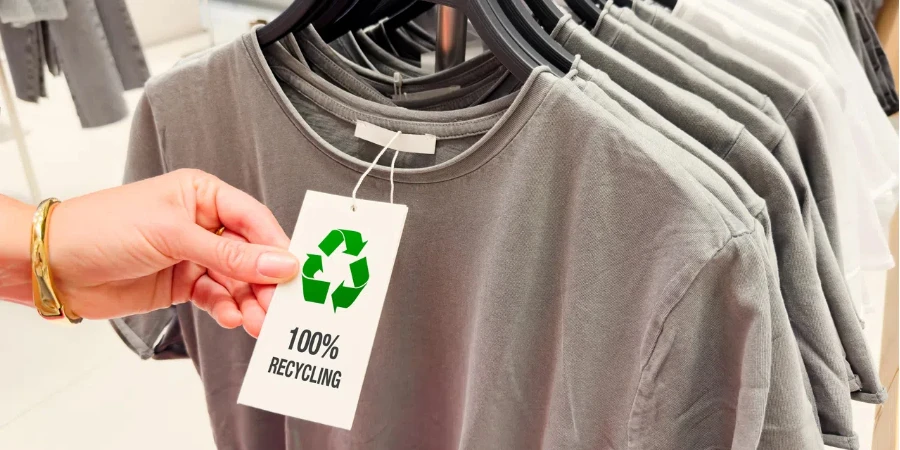If the fashion industry made better use of the data it has available it could reduce waste by 50%, lower costs and improve its sustainability credentials throughout the supply chain.

Muchaneta ten Napel, founder and CEO at consultancy and educator Shape Innovate, told attendees at the recent Global Fashion Summit in Copenhagen that 80% of fashion products currently go unsold. “Data can cut that in half,” she added.
If data can help apparel brands cut down on waste, and therefore improve profits, while also helping the industry to become more sustainable, why isn’t it already being used to this effect?
Atnyel Guedj, chief product officer at German data gathering company Made2Flow, offered one explanation. He suggested that the fashion sector can be “a little bit terrified” of its own supply chain but said there was no need to be afraid of data.
What data does the fashion industry need?
Scott Raskin, CEO at supply chain software provider Worldly explained that, as we already know that 90% of fashion’s environmental impact lies in its supply chain, the sector needs to focus its efforts here.
“There’s not a single brand that doesn’t need to understand what is going on in every facility that they choose to do business with,” Raskin explained, although he warned that this need for more information can become a “burden” for suppliers.
“We just need to remember that there is a supplier on the other side,” Guedj added, agreeing that requests for more information from suppliers could become overwhelming.
Jeremy Lardeau, senior vice president at Higg Index, agreed that the complexity of the issues faced by the fashion industry will require us to use a lot of data – and shared data – in order to find solutions. “It’s a collective pre-competitive endeavor,” he explained.
He added that without agreeing on a standard set of data, the apparel sector risks duplicating a lot of audits and verifications. If one standard can be accepted, this will avoid suppliers having to arrange multiple site tours and factory visits.
Will pending climate legislation speed up this transition?
Thanks to a number of pending laws on sustainability, fashion brands and manufacturers will soon be required to share much more data on their supply chains.
In the EU alone, there is the Corporate Sustainability Due Diligence Directive (CSDDD), the Corporate Sustainability Reporting Directive (CSRD) and Digital Product Passports (DPPs). These new rulings will make much of this data a requirement, rather than an option for brands. But the sooner the sector can get on board, the better.
Raskin warned that many of the deadlines for these new rules are “approaching really fast”. Worldly has previously told Just Style that data requirements for fashion brands are only likely to become more stringent in the coming years.
Napel added that while regulations could help whip the industry into shape, she also noted that they were only “a piece of the puzzle” and not a “silver bullet” towards sustainability.
Will it be harder for smaller companies in the sector to comply?
Made2Flow’s Guedj explained that, contrary to many assumptions, smaller brands often have a closer relationship with their supply chains and are better placed to keep track of all changes. Although he added that some were likely to need collective support from the sector.
He added that most suppliers will have a good understanding of the data requested and will want to share the information required by brands. “They actually are really happy and willing to have that open conversation, rather than just barking an order towards them.”
“It doesn’t have to be complex,” he added. “They don’t need to be afraid of the supply chain anymore,” Guedj explained before highlighting that data should be viewed as an “ally” and key to the survival of any fashion business.
However, he cautioned that everyone should remember that “there’s a human being on the other side” of all the data collected, and everyone in the chain will have different needs.
What steps should the sector take next?
Worldly’s Raskin believes that a standardised approach is getting closer thanks to recent developments in technology. “Now we can put insights into the data so hopefully that collective can start.”
Others see an issue with the fashion industry’s usually guarded nature that makes data-sharing difficult. “Unfortunately, I think in the fashion industry, it’s not natural to us to be transparent,” Napel explained.
However, Higg Index’s Lardeau believes the sector is getting closer to alignment and “the tools that we need to start having a full picture.” However, he added that soon the sector will need to move beyond data collection and into action on key issues.
Lardeau hopes that soon the industry will no longer be talking about data in the same way, as it will become “just part of how we do business”.
“It doesn’t take super advanced data modelling to figure out that we need to phase out coal,” he explained, adding that a lot of these sustainability issues were not data-based, but rather more systemic issues in the industry.
Raskin agreed, but added that having sufficient data will allow the industry to do what it needs to do – “which is to figure out how to reduce the impact and help suppliers improve what they do.”
Source from Just Style
Disclaimer: The information set forth above is provided by just-style.com independently of Chovm.com. Chovm.com makes no representation and warranties as to the quality and reliability of the seller and products.




